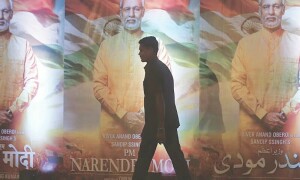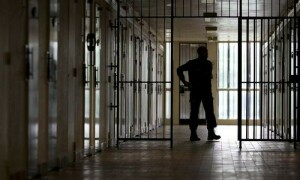LET us finally call a spade a spade. Let’s not pretend that all parties to the crisis in Islamabad genuinely desire to work their way out of the impasse. Let’s not pretend that the calls from every corner to solve the matter through peaceful negotiations shall eventually bear fruit — everything that could be peacefully negotiated already has been. Let’s not pretend this is only a dispute about rigged elections or the Model Town incident. Only after abandoning these pretences can we actually organise a coherent defence of democracy.
We must start by recognising that neither the Constitution nor any democratic tradition allows for indefinite protest — no matter how peaceful. Article 16 of our Constitution states “Every citizen shall have the right to assemble peacefully and without arms, subject to any reasonable restrictions imposed by law in the interest of public order”.
The dharnas are no longer peaceful. Protesters have carried arms from the outset — nail-studded sticks and slingshot. A sit-in lasting 17 days and nights on a main thoroughfare that paralyses life in the nation’s capital is surely past the limits of reasonableness. Public order is in a shambles. Leaders of the dharnas openly call upon their followers to resist the police. One speaks of insurrection; the other of civil disobedience. They incite violence by crying out for martyrdom, donning burial shrouds and digging graves.
So why is the government powerless to enforce the law? Why are loudspeakers not disconnected, containers not removed, and the top leaders restrained from further incitement through use of preventive detention laws? Why is the Supreme Court so sanguine about the non-enforcement of its orders to clear the Constitution Avenue? Why does the government step aside when a handful of protesters take over the PTV building?
Everyone is terrified of the unnamed elephant in the room.
Because everyone is terrified of the unnamed elephant in the room. The elephant who decreed that the matter must be settled through peaceful negotiations and who forbade, on Sunday, use of force against the protesters. The one who historically decides when the nation’s affairs are unstable enough to justify wrapping up the democratic system.
The PAT and PTI relationship with the army has raised some eyebrows. It is rare, after all, for participants of a revolutionary march against the status quo to raise slogans in favour of the army. Equally rare, to see preachers of civil disobedience rushing off obediently to GHQ — a wide grin on their faces — minutes after receiving a call from the COAS.
“Outraged and uncontrollable” marchers bent upon taking over parliament and PTV buildings slink off quietly when requested by army officers. With that level of influence over the marchers and given the army’s concern about the present state of civil unrest, one wonders why it does not simply request Qadri and Khan to leave the capital for a few days and allow things to cool down?
But let us assume that the army is unable or unwilling, presently, to make such a request. What options are left to parliamentary parties and the rest of civil society — including bar associations — that wish to defend democracy?
One option could be to request the prime minister to resign to save the democratic system. But would such a sacrifice truly save the system? Does it not actually condemn parliament to continual subservience to non-democratic forces? This parliament elected the prime minister. He still enjoys its confidence. If he resigns — even for a single day — under compulsion of a few thousand determined protesters backed by invisible forces, what kind of precedent would it set?
All pro-democratic forces in Pakistan must unite to defend parliament and its elected prime minister. The Supreme Court has already directed the Constitution Avenue to be cleared. All parties in parliament should move a resolution to move the Supreme Court for implementation of such directives in conjunction with other civil society actors including bar associations.
And if PTI and PAT continue to disobey, and if the civil administration is unable to execute such orders for fear of provoking violence, then the Supreme Court must invoke its powers under Article 190 of the Constitution and direct the army to act in aid of its orders. Simultaneously, the government and parliament should take concrete steps towards implementation of the other PAT and PTI demands that have already been accepted.
Hopefully, this would allow the dharnas to be cleared without resort to further violence. It would also allow PAT and PTI to save face. More importantly, it would give the army (and the Supreme Court) an opportunity to show their commitment to the democratic system and clear their reputation that is unfortunately — once again — being besmirched. Finally, and in any event, it would at least let everybody know where everyone stands.
The writer is the president of the Karachi Bar Association.
Published in Dawn, September 2nd, 2014













































